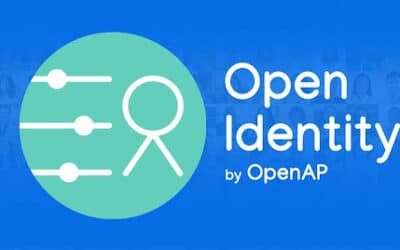Consumers expect personalized experiences from the businesses they interact with; that’s what makes audience targeting so important!
In this article, we’ll cover the importance of audience targeting and the top tips for ensuring you’re focused on the right audience.
What Is Audience Targeting?
Audience targeting involves segmenting your audience based on specific characteristics, such as demographics, interests, and behaviors. By segmenting your audience, you’ll be able to tailor your marketing efforts toward specific groups of people and deliver hyper-relevant content that resonates with your customers.
Segmentation allows you to create specific content that is relevant and meaningful to the various segments of your target audience. It also allows you to send tailored campaigns to fewer people—suppressing the costs of running a campaign and creating a higher ROI at the same time.
This is different from your buyer persona. Although your buyer persona will also have important information that can direct your marketing efforts, segments for your campaigns are usually more case-specific.
The Importance of Audience Targeting
Audience targeting is not about reaching more people—it’s about reaching the right people. Segmentation increases your ROI, and here’s why:
- You can target a smaller segment of your target audience. A narrower segment means that you get to create a more specific message. For example, if you sell running shoes, you may create a segmented campaign for former athletes that speaks to their love of the competition and another for new moms that encourages them to jog for some much-needed “me” time.
- You can personalize your marketing campaigns. For example, you can send an email or text to customers to restock perishables that they’ve bought before.
- You can create a better experience for your customers. When you make your customers feel valued and heard with each of your messages, you can build trust and a stronger connection with your customers.
Let’s say that you work for a SaaS company that focuses on boosting productivity. You discover that a big segment of your current users are freelancers. You decide to create a content marketing campaign to drive brand awareness. This is where personalization comes in handy: Start with search engine optimization (SEO) blog content that focuses on your freelancer users’ needs and encourages them to stay on your website.
This is how audience targeting works; with deeper insights, you can create campaigns using more advanced targeting options. For example, if you’re also incorporating social media campaigns for said freelancer segment, you can utilize third-party data on Facebook to specifically target freelancers that fit your ideal audience.
Needless to say, audience targeting is a big part of your marketing strategy. By targeting a specific audience, you can ensure your offline and digital marketing efforts are not wasted on those unlikely to engage with your product or service.
Types of Target Audience Segmentation
There are many ways to segment your audience. But here, we’ll focus on three key types of audience segmentation: demographics, behavior, and interests.
Demographics
Demographic segmentation is perhaps the most common form of audience segmentation. It includes dividing your audience based on aspects like age, location, gender, income level, education, and more. This type of segmentation is often the starting point for marketers as it provides a broad overview of who your potential customers are at a basic level.
A product aimed at college students may require a different marketing approach compared to one targeted at retirees. Similarly, knowing their location can help you localize the campaign to account for cultural nuances or geographical considerations.
As an example, let’s say you run marketing at a fashion brand launching a campaign aimed at young adults. By focusing on the age demographic of 18-24, you can craft a campaign that uses the culture, trends, and language that resonates with your audience.
You can further refine your campaign by considering gender, location, and education level. For example, an urban, college-educated female audience might appreciate a campaign that highlights sustainable fashion practices, given the rising interest in environmental consciousness among this demographic.
Behavior
This approach divides your audience based on their behavior, specifically their purchasing habits. This type of segmentation can offer powerful insights into how your customers interact with your business and what influences their buying decisions.
Behavioral segmentation drives a lot of the personalized experiences you see happening, from something as simple as onboarding emails, remarketing ad campaigns, or personalized recommendations. For example, you might look at what products a customer has bought in the past, how frequently they make purchases, or what prompted a particular purchase.
By analyzing customer buying habits, you can predict future purchase patterns, identify potential upsell or cross-sell opportunities, and design marketing copy that addresses specific consumer behaviors. For instance, if a segment of your audience frequently purchases a particular product, you could target them with promotions or new offerings related to that specific product.
Understanding why a customer made a specific purchase can help you tap into the motivations and needs that drive their buying decisions. Behavioral triggers are especially effective in your web and in-app analytics. For example, if you have Google Analytics installed on your website, you can track certain metrics that will help you get more data on what your ideal customers think about your current messages and customer experience.
Through your in-app analytics, you might find your “Aha!” moments by checking which features people try just before they upgrade to a paid subscription. This information can be used to create a campaign that highlights these important features during your onboarding and across your marketing copy.
Another example is a fitness apparel brand that uses behavioral segmentation to target customers who have bought running shoes in the past. Recognizing a potential interest in running, the brand could then launch a campaign promoting its latest range of running gear.
This campaign might feature customer testimonials, expert running tips, and information about how their products enhance running performance. By aligning their campaigns with the established interests of their customers, the brand increases the likelihood of engagement and conversion.
In this way, behavioral segmentation allows businesses to fine-tune their marketing efforts, leading to more meaningful interactions and improved customer loyalty.
You can also use life event triggers, such as moving, having a baby, or buying a new home, to time your marketing efforts so you can show relevant ads to the right audience in their time of need. For example, a furniture company could target customers who have recently bought a new home with tailored advertising for home furnishing products.
Interests
Interests often drive a person’s motivation to make a purchase. As a result, segmenting by interests can help you understand what resonates on a deeper level. You can create campaigns and marketing messages that forge authentic connections with the target audience.
Segmenting based on interests includes breaking down your audience based on their interests, hobbies, values, and more. A consumer’s interests and values can directly influence their buying behavior. An environmentally conscious consumer might be more inclined to purchase from a brand that also values sustainability.
On a bigger scale, you can also make your packaging bio-degradable, send emails instead of paper receipts, or donate a small percentage of your profits to environmental groups. And to engage this audience, your company can launch a campaign highlighting its use of ethically sourced materials and environmentally-friendly manufacturing processes. This could be complemented with stories about the positive impact of sustainable practices on the environment and communities involved.
Segmenting audiences based on these interests and values helps you create tailored messages that strike a chord with potential buyers and drive more conversions.
By aligning your campaign with the values and interests of your audience, you can not only increase the likelihood of engagement and purchases but also build a reputation as a company that genuinely shares its customers’ values. Interest segmentation aligns marketing strategies with your target audience’s intrinsic motivations, creating a more impactful and authentic brand experience.
Tips for Effective Audience Targeting
There are many ways to segment your audience. Here are a few points you need to consider when you first start segmenting.
- Use the right platforms: You need a couple of tools to be able to segment your audience and use the data properly. A CRM will help you track and maintain data that will help you trigger certain actions. An analytics tool is necessary to help you gather data from people who have already interacted with your assets, such as social media posts, social media or Google ads, or your website. And an audience platform like Deep Sync One can get you in-depth insights about your audience and provide valuable data to refine your targeting strategies.
- Consider all segmentation types: While demographic segmentation is a great starting point, don’t forget about behavioral and interest segmentation. These can offer valuable insights that can significantly enhance your marketing efforts.
- Personalize your messaging: Use the insights gained from audience targeting to personalize your marketing messages. This can help improve engagement and conversion rates.
Streamline Audience Targeting With Deep Sync
Audience targeting is all about getting your marketing messages to the right people, not just more people. By dividing your audience into segments based on characteristics, like demographics, behaviors, and interests, you can deliver content that deeply resonates with your customers, and in doing so, save money and boost your return on investment.
Remove marketing guesswork and generate custom audience segments with high-quality datasets from Deep Sync. Select from thousands of ready-made segments and deliver the audiences to your social accounts or programmatic destinations to start a hyper-targeted campaign. See what kind of datasets we have on the Deep Sync One platform to get started.












0 Comments